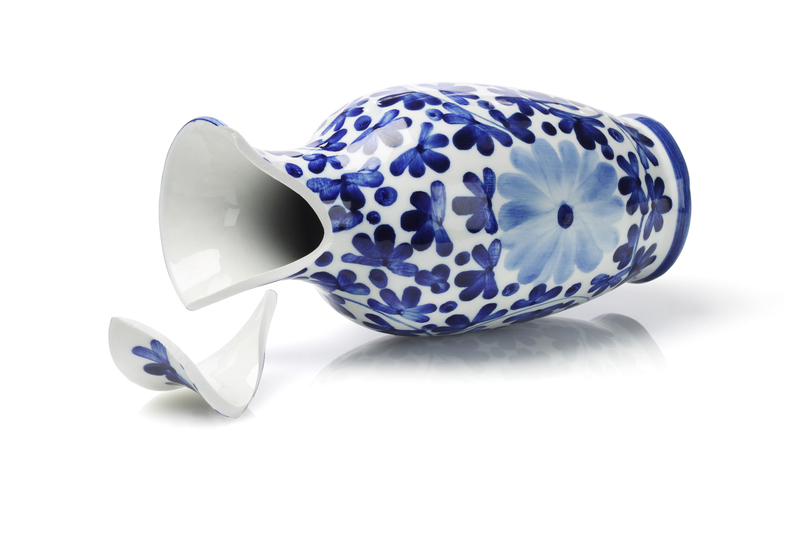What to Watch Out for When Moving Your Bed and Mattress: The Ultimate Guide
Moving homes can be an exciting but strenuous process, especially when dealing with large and essential items like your bed and mattress. Knowing what to watch out for when moving your bed and mattress will ensure your transition is smooth, your sleep setup remains intact, and you protect your investment in quality rest. This comprehensive guide explores every crucial concern, tip, and trick you need to consider during the moving process.
Why Proper Care During a Move Matters
Your bed and mattress are among the most significant--and often expensive--items in your home. Damage during a move not only impacts your finances but also affects your future comfort and health. Moreover, improper handling can void warranties or lead to issues like mold or pest infestations. By understanding what to look out for when moving your bed and mattress, you prevent unnecessary costs, discomfort, and hassle.

Pre-Move Preparation: The Key to Success
1. Measure Everything--Twice
- Dimensions: Measure your bedframe, headboard, footboard, and mattress. Note their height, width, and length.
- Doorways & Stairs: Measure all entryways, hallways, and stairwells you'll need to pass through. Neglecting to do this can cause frustrating delays and potential damage.
2. Gather the Best Packing Materials
- Mattress Bags: These are thick, protective plastic covers designed to shield mattresses from dirt, moisture, bugs, and tears during a move.
- Furniture Blankets: Use these to wrap bed frames and headboards, especially those with delicate woodwork or upholstery.
- Ziploc Bags & Labels: For screws, bolts, and other hardware. Clearly label everything for stress-free reassembly.
- Heavy-Duty Tape: Secure the mattress bag and keep blankets in place.
Tip: Invest in quality materials for the move--you'll thank yourself later!
3. Disassemble the Bed Frame Properly
- Consult Instructions: Refer to your bed's assembly manual or manufacturer's website for guidance.
- Remove Mattress & Slats: Always start by removing the mattress and any slats or panels.
- Keep Screws and Bolts Together: Store all small pieces in labeled bags, taped to the frame or kept in a designated box.
- Take Photos: Take step-by-step photos of the disassembly process. They'll be invaluable when it's time to put everything back together!
When Moving: Best Practices for Transporting Beds and Mattresses
1. Protect Your Mattress
- Use a Mattress Bag: This is non-negotiable to guard against moisture, tears, and grime.
- Don't Bend or Fold: Most mattresses, especially memory foam or innerspring, shouldn't be bent as it can break internal coils or irreparably damage foam structure.
- Carry Upright: For queen and king mattresses, carry them upright whenever possible--this helps maintain shape and fits through tight spaces.
2. Handling the Bed Frame
- Wrap Each Piece: Use moving blankets or bubble wrap to prevent scratches, chips, or dents.
- Tie Down Loose Parts: Secure any moving parts to avoid shifting and potential breakage during transit.
- Stack Strategically: Place heavier sections on the bottom in the moving van, and ensure nothing is stacked atop your mattress.
3. Lifting and Carrying Safely
- Ask for Help: Don't try to move large mattresses or frames alone--get a friend or hire professional movers.
- Use Proper Technique: Bend at the knees, keep your back straight, and avoid twisting to prevent injury.
- Use Moving Straps or Dollies: These tools make hauling heavy items safer and easier.
4. Weather Watch: Don't Let the Elements Ruin Your Mattress
- Rain or Humidity: Never move your mattress unprotected in wet weather. Moisture can quickly cause mold or mildew.
- Extreme Heat: Overheating, especially with foam mattresses, can cause warping. Store out of direct sunlight.
- Snow or Dirt: Protect against mud, snow, and dust at all times by keeping your mattress bag sealed and the path clear.
What to Watch Out for When Moving Your Bed and Mattress: Potential Risks & How to Avoid Them
1. Damage to Mattress Structure
- Folding or Rolling: Ruins innerspring or hybrid mattresses, and can damage the integrity of memory foam.
- Punctures and Tears: Watch sharp objects or protruding corners when maneuvering.
- Compression: Don't stack heavy furniture on top; excessive weight can create permanent indentations.
2. Bed Frame Issues
- Lost Hardware: Prevent frustration during reassembly by meticulously organizing small pieces.
- Splintered Wood or Bent Metal: Wrap and handle all parts with care.
- Misplacement of Parts: Label every item or keep an inventory list for peace of mind.
3. Cleanliness Concerns
- Bugs: Ensure the mattress remains sealed in its bag at all times to prevent bed bugs, dust mites, and spiders from hitching a ride.
- Dirt and Stains: Avoid dragging your mattress along floors--this prevents exposure to allergens and bacteria.
4. Safety Hazards
- Personal Injuries: Get help for lifting, and never rush down stairs or around corners.
- Trip Hazards: Keep pathways clear and free of clutter during the move.
How to Move Every Type of Bed and Mattress Properly
Beds and mattresses come in all shapes and sizes, and so do their moving requirements. Here's what to consider for different styles:
Moving Innerspring and Hybrid Mattresses
- Never bend or fold--springs can snap or shift, ruining support.
- Transport upright and secured with straps for minimal movement.
Moving Memory Foam and Latex Mattresses
- Can often be carefully compressed for short periods, but check manufacturer guidelines first.
- Avoid extreme heat during transport, as foam can deform.
- Be mindful of tears; foam is more prone to damage than innerspring models.
Platform Beds, Adjustable Beds, and Bunk Beds
- Disassemble as much as possible.
- Take detailed photos to record assembly order and placement of hardware.
- Secure and clearly label all moving parts, especially electrical components for adjustable models.
- Check for moving-specific instructions with bunk beds, as they may require extra bracing.
Professional Movers vs. DIY: What's Best for Your Bed and Mattress?
When considering how to move your bed and mattress, you'll weigh the pros and cons of hiring professionals or doing it yourself.
DIY Pros:
- Cost savings if you have the right tools, help, and vehicle.
- Total control over how your items are handled and packed.
DIY Cons:
- Injury risk without proper help or equipment.
- Possibility of damage to your bed, mattress, or home.
- Potential warranty voiding if mishandled.
Professional Movers' Benefits:
- Trained to handle oversized or delicate furniture safely.
- Typically insured for any accidental loss or damage.
- Can provide packing materials and disassembly/reassembly services.
Professional Movers' Downsides:
- Cost is higher, especially for long-distance moves.
- You have less oversight over the process.
For most people, mixing approaches--doing the packing and disassembly yourself, but hiring movers for actual transport--offers the best balance between savings and peace of mind.
After the Move: Setting Up Your Bed and Mattress
- Allow Your Mattress to Breathe: Remove it from the bag as soon as possible to avoid trapping odors or moisture.
- Inspect for Damage: Check for rips, stains, or other damage immediately.
- Reassemble Carefully: Use your labeled bags and photo guide. Tighten all screws but avoid overtightening--which can strip threads.
- Clean Surfaces: Wipe down the bed frame and allow the mattress to air out before putting on bedding.
- Test for Stability: Once assembled, give your bed a gentle shake to make sure it's safe and secure.

Frequently Asked Questions: Moving Beds and Mattresses
Can I move my mattress without a bag?
It is highly recommended not to, as unprotected transport exposes it to dirt, damage, and pests. Mattress bags are inexpensive and protect your health investment.
Can I strap a mattress to the top of my car?
While sometimes seen in movies, this is unsafe and might damage both your mattress and vehicle. Always use a proper moving truck or trailer designed for transporting large, heavy items.
What if my mattress gets wet during a move?
Immediately remove it from its bag and dry it thoroughly in a ventilated area. Using a wet mattress can lead to mold, mildew, and odors--never ignore dampness!
How do I know if my mattress or bed frame needs replacing after a move?
If you notice permanent sagging, broken slats, cracked metal or wood, or persistent smells and stains, it might be time to replace. Always weigh the cost of repairs versus a new purchase.
Key Takeaways: What to Watch Out for When Moving Your Bed and Mattress
- Plan and prepare thoroughly before your move.
- Invest in protective materials such as mattress bags and blankets.
- Disassemble and organize hardware to make setup at your new space stress-free.
- Use proper technique and safety precautions when lifting and moving.
- Never compromise on keeping your mattress dry, clean, and upright.
Moving your bed and mattress doesn't have to be a nightmare. By staying vigilant, taking your time, and following these expert tips on what to look out for, you protect your sleep, your investment, and your peace of mind--ensuring restful nights ahead in your new home.
```


